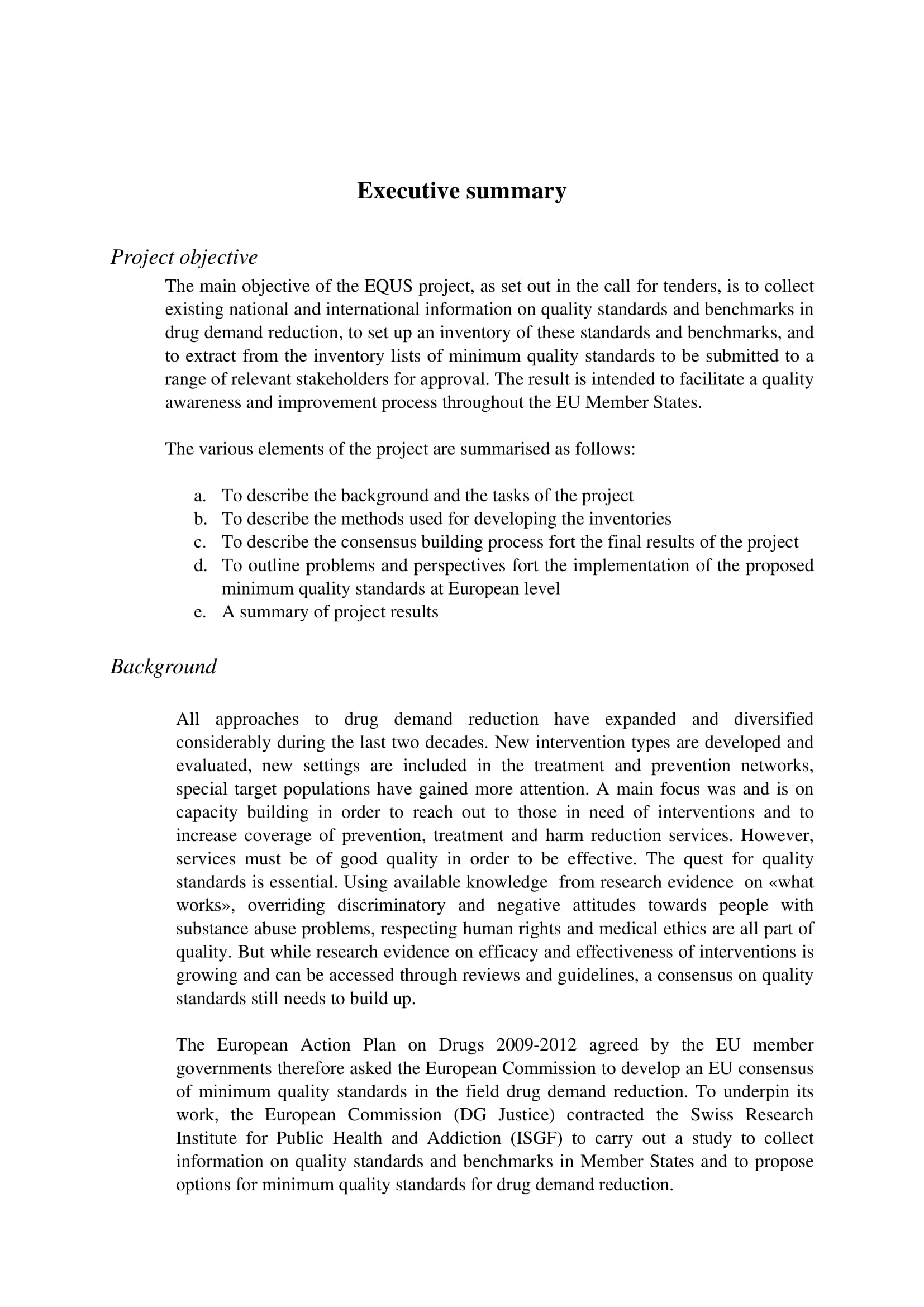Executive Summary for a Business Plan
In general, an executive summary summarizes the key points of a report or paper. The main goal of an executive summary is to make even the most technical paper readable and understandable. An executive summary is also used as a basis to understand complex reports or papers through its context and information.
In this guide, we will focus on writing an executive summary of a business plan. Although they have the same objectives as those which are used in different fields, they still have to be well-written and informative, as all executive summaries should be.

An executive summary serves as a brief introduction of the business plan. It introduces the project, its objectives, the process to be undertaken, etc. It does not only list the key points but also provides a concise yet thorough explanation of the business plan. You may also see Objective Summary Examples & PDF
Information to Include in an Executive Summary
- Start with your business name, location, and contact information.
- State what your business offers and what problems in the market you solve. Include a brief description of your products and services and why it’s necessary to the consumers.
- Indicate the target market for your business. If the product of your business does not directly define your market, it is best to include it in the executive summary.
- A business plan is only needed when you share it with external stakeholders– in this case, investors. Indicate the purpose of your business plan, be it for investment or a bank loan.
- Indicate the size or scale of the project. For example, in existing businesses, list down annual sales or number of employees. For a startup business, it means you need to add your goals or targets (for example, sales targets) for the next two years or so.
- As some investors will only look at the executive summary, mention your business’s competitive advantage. For example, mention that the instructors for your review center are all licensed nurses or that your review center has had a 100% passing rate since its foundation.
Startup Business Executive Summary
For startup businesses, here are some points to ponder while creating an executive summary:
1. Business Opportunity
State the problem your business aims to solve. You should mention the benefits you can bring to an individual or organization. Also, see Business Plan Outline with Examples.
2. Taking Advantage of the Opportunity
Now that you have stated the opportunity, explain how your business will serve the market. You have to explain how you’ll be able to solve the problems and provide the needs of your target market.
3. The Target Market
Describe your target market as they are the main consumers of your products.
4. Business Model
Describe your products and how it will generate revenues. Also, include in this section the costs you will incur in the production and distribution of your products.
5. Marketing and Sales Strategy
Briefly outline your plans for promoting or marketing your products. Explain how you plan to run your business and how you plan on selling your products through various marketing tools.
6. The Competition
Describe your competition and your strategy in competing against them. Emphasize your advantages like what you can offer to the customers that your competitors can’t.
7. Financial Analysis
Your financial plan should include a short summary of your projections for at least the next three to five years.
8. Owners/Staff
Introduce and describe the owners and the rest of management team as well as emphasize their specific expertise in regards to the project. This will serve as a mini-resume for you and your team. This way you can assure the investors that the people who will handle the project know what they are doing.
9. Implementation of Plan
The schedule from the planning stage to the opening of your business must be organized in an outline. Arrange in a chronological order how the process would go like. This will also assure the investors that you’re doing the project and delivering it on time to avoid additional expenditure.

Established Business Executive Summary
For established businesses that seek additional funding or investments, it is best to include these few key points:
1. Mission Statement
This explains the purpose of your business. In a few sentences, briefly describe the core of your business, what it is for and the philosophies guiding it.
2. Company Information
Give a brief overview of the business’s history. Describe your products and/or services– when, where, how and why you decided to sell it. Include a brief introduction of who the owners and key employees are. You can also include demographics such as the number of employees, business locations, etc.
3. Business Highlights
Describe how your business has grown throughout the years. Include the profitability highlights, expansion projects, as well as new products you have sold in the past few years.
4. Financial Summary
If the purpose of the business plan is to ask for additional financing in order to expand, then give a brief financial summary of your business.
5. Future Goals
Describe the long-term and short-term goals for your business. If you are looking for financial investment, explain how additional funds can be used in expanding the business. Share the objectives you want your business to achieve with the help of investment.
Executive Summary Example
Tips for Writing an Executive Summary
- Focus on providing a summary. The readers would want to read just a quick overview of what’s inside your business plan. Avoid including information that has to be broadly explained in the summary; always leave room for questions so readers would want to read the subsequent sections of the business plan.
- Keep your language strong and positive. Remember that your business plan is a formal paper. Your tone, language, and words must be professional. Avoid sounding unsure with your facts and information as this will make your investors have second thoughts about investing in your company.
- Keep it short (not more than two pages long). Your executive summary is just an overview, it doesn’t need to be lengthy. As long as you are able to clearly explain the objectives and other vital information in your plan, the summary is good to go. Do not overdo your summary and include unnecessary information. Remember that some of your audience will only read the summary and if you make it too long, you might lose their interest instead.
- Polish your executive summary. Reread and let your team read your business plan as well before submitting to investors. Correct, edit and revise your summary as it plays a big role. Make sure there are no misspellings, incorrect grammar and unnecessary information included in the summary.
- Tailor it to your audience. Make sure your readers will be able to understand and easily get the point of your summary. If your readers are investors, use words and descriptions they would want to read. If you are seeking a loan, your readers will mostly be bankers– indicate how you’ll be able to pay the loan in order to encourage them to agree with your proposition.
- Put yourself in your readers’ place. As a way of tailoring your summary to your audience, put yourself in their place. In order to actually understand the interests of your audience, view it from their perspective.
Overall, an executive summary is a quick overview of your business plan as a whole. It should be concise but it should also be able to clearly explain the goals and objectives of the plan. Additionally, it should be written in a professional manner and be able to express and answer the needs of the readers.



